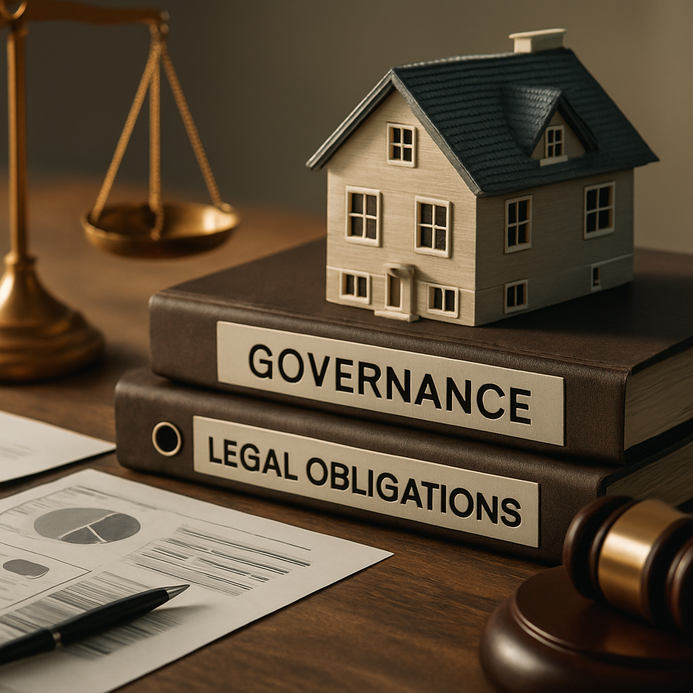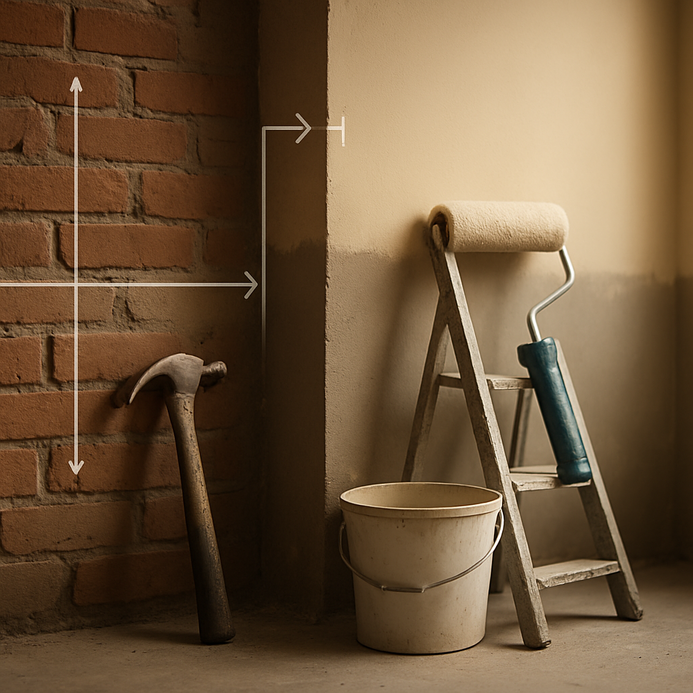Maximise Your Investment: The Essential Guide to Real Estate Return on Investment
Real Estate Return on Investment (ROI) is a crucial metric that measures the profit earned from real estate investments as a percentage of its total cost. Understanding your real estate ROI is essential as it helps gauge the success of your investment and takes into account all the expenses associated with owning and managing a property. Aiming for an ROI that matches or exceeds average returns on major stocks, such as the S&P 500’s annual return of about 10%, can set a solid benchmark for your investment’s performance.
To navigate the complexities of maximizing your real estate return on investment, it’s vital to know how to calculate return on real estate investment effectively. Factors like location, mortgage rates, and prevailing market trends play a significant role in influencing ROI. Additionally, exploring various strategies while being mindful of common mistakes can further enhance profitability in this sector. This article will guide you through the foundational concepts and strategies to optimize your real estate ROI, highlighting the importance of metrics and external influences on your investment’s success.
- 1 How to Calculate Return on Real Estate Investment: Key Formulas and Metrics
- 2 Factors Influencing Real Estate ROI: Location, Property Type, and Market Trends
- 3 Factors Influencing Real Estate ROI: Location, Property Type, and Market Trends
- 4 Strategies to Maximize ROI
- 5 Diversifying Your Real Estate Portfolio
- 6 Common Mistakes to Avoid
- 7 Conclusion
- 8 FAQs
How to Calculate Return on Real Estate Investment: Key Formulas and Metrics

Understanding ROI Calculation Methods
To effectively calculate your real estate return on investment (ROI), it’s crucial to understand the different methods used. Here are the primary approaches:
- Cost Method
This method calculates ROI by dividing the investment gain by the property’s initial costs. It’s straightforward and useful for evaluating the profitability of cash transactions. - Out-of-Pocket Method
For financed transactions, this method takes the current equity of the home and divides it by the current market value. It reflects the actual cash invested, making it vital for understanding leverage effects.
Key ROI Formulas
ROI can be calculated using several formulas depending on the type of investment:
- Cash Transaction: ROI = (Annual Return / Total Investment) * 100%.
- Financed Transaction: ROI = (Annual Return / Out-of-Pocket Expenses) * 100%.
- Rental Property: ROI = (Annual Rental Income – Annual Operating Costs) / Mortgage Value.
- REITs: Reflects an average annual return of 12.99%.
Factors Impacting ROI
Several factors can significantly impact the ROI:
- Investment Gain – Investment Cost: The difference between the selling price (or income generated) and the cost of the investment.
- Equity Invested: The amount of money invested upfront, especially in scenarios involving a mortgage.
Utilizing ROI Metrics
Understanding the following metrics can enhance your ability to calculate ROI effectively:
- Net Operating Income (NOI): Calculated as Rental income minus Operating expenses and Vacancy losses.
- Cap Rate (Capitalization Rate): Net operating income divided by Purchase price times 100.
- Cash-on-Cash Return: Annual cash flow divided by Total cash invested times 100.
These metrics not only help in calculating ROI but also in comparing different investment opportunities to determine which offers the best potential return.
Factors Influencing Real Estate ROI: Location, Property Type, and Market Trends

Location and Its Impact on ROI
- Desirability Factors: Properties in areas with good schools, low crime rates, and convenient access to transportation often yield higher ROI due to their attractiveness to potential buyers or renters.
- Local Market Conditions: It’s crucial to understand that real estate is inherently local. Local market trends, such as supply and demand dynamics, significantly influence property values and ROI.
- Neighborhood Research: Before investing, thorough research into the neighborhood’s amenities, school system, and community vibe is essential. This can help predict the property’s long-term value and attractiveness.
Property Type and Market Demand
- Residential Properties: Factors such as family growth and urbanization trends can impact the ROI of homes, condominiums, and townhouses. These properties cater to the basic need for housing and may remain in demand based on demographic trends.
- Commercial Properties: The success of commercial properties like offices or retail spaces is closely tied to the economic environment and commercial activity in the area. Their ROI is dependent on the business climate and commercial demand.
Property Age and Condition
- Maintenance and Upkeep: Older properties may require more maintenance, which can reduce net returns. Investors should assess the condition of the property carefully to estimate potential maintenance costs.
- Unique Properties: Some older properties, often referred to as “vintage,” can attract premium pricing due to their unique characteristics and charm, potentially enhancing ROI.
Economic and Interest Rate Influences
- Interest Rates: The cost of borrowing money to invest in real estate can affect ROI. Lower mortgage rates generally make purchasing property more accessible, thus potentially increasing property values and ROI.
- Economic Conditions: Broader economic factors, including employment rates and economic growth, can influence real estate markets and, consequently, ROI. Investors need to stay informed about these conditions to make timely decisions.
By considering these factors, you can better navigate the complexities of real estate investment and position yourself to maximize ROI. Remember, the right location, property type, and a keen eye on economic conditions are key to achieving favorable returns on your real estate investments.
Factors Influencing Real Estate ROI: Location, Property Type, and Market Trends

Location and Its Impact on ROI
- Desirability Factors: Properties in areas with good schools, low crime rates, and easy access to transportation typically have a higher ROI due to their attractiveness to potential buyers or renters.
- Local Market Conditions: Understanding that real estate is inherently local is crucial. Local market trends, such as supply and demand dynamics, significantly influence property values and ROI.
- Neighborhood Research: Before investing, thorough research into the neighborhood’s amenities, school system, and community vibe is essential. This can help predict the property’s long-term value and attractiveness.
Property Type and Market Demand
- Residential Properties: Factors such as family growth and urbanization trends can impact the ROI of homes, condominiums, and townhouses. These properties cater to the basic need for housing and may remain in demand based on demographic trends.
- Commercial Properties: The success of commercial properties like offices or retail spaces is closely tied to the economic environment and commercial activity in the area. Their ROI is dependent on the business climate and commercial demand.
Property Age and Condition
- Maintenance and Upkeep: Older properties may require more maintenance, which can reduce net returns. Investors should assess the condition of the property carefully to estimate potential maintenance costs.
- Unique Properties: Some older properties, often referred to as “vintage,” can attract premium pricing due to their unique characteristics and charm, potentially enhancing ROI.
Economic and Interest Rate Influences
- Interest Rates: The cost of borrowing money to invest in real estate can affect ROI. Lower mortgage rates generally make purchasing property more accessible, thus potentially increasing property values and ROI.
- Economic Conditions: Broader economic factors, including employment rates and economic growth, can influence real estate markets and, consequently, ROI. Investors need to stay informed about these conditions to make timely decisions.
Strategies to Maximize ROI

Effective Property Management
- Tenant Screening and Selection: Ensuring you select reliable tenants can significantly influence your ROI by reducing turnover and maintenance costs.
- Regular Maintenance and Repairs: Keeping the property in top condition minimizes unexpected expenses and preserves the property’s value.
- Building Strong Tenant Relationships: Good relationships can lead to longer tenancies and fewer vacancies.
Increasing Property Value
- Renovations and Upgrades: Focus on areas that increase value such as kitchens and bathrooms.
- Curb Appeal and Landscaping: First impressions matter; enhancing the exterior can attract more buyers or renters.
- Adding Amenities: Features like laundry facilities or a gym can increase the property’s attractiveness.
Tax Strategies for Real Estate Investors
- Depreciation and Deductions: Take advantage of tax breaks for depreciation to offset income and maximize returns.
- Tax-Deferred Exchanges: Utilize 1031 exchanges to defer capital gains taxes when selling and reinvesting in new property.
- Real Estate Professional Status: Qualifying as a real estate professional can offer additional tax benefits.
Diversifying Your Real Estate Portfolio

- Investing in Different Property Types: Diversification can reduce risk and stabilize income streams.
- Geographic Diversification: Investing in various locations can protect against local market fluctuations.
- Real Estate Investment Trusts (REITs): REITs allow investment in real estate markets without needing to manage properties.
Exit Strategies for Real Estate Investments
- Selling Your Property: Plan the timing of sales to maximize market conditions.
- Rent-to-Own Agreements: These can be attractive to buyers who need time to build credit.
- 1031 Exchanges: Allow reinvestment of proceeds from sales into new properties to defer capital gains taxes.
By implementing these strategies, you can enhance the profitability and stability of your real estate investments.
Common Mistakes to Avoid

Avoiding Costly Mistakes in Real Estate Investment
- Underestimating Expenses: Many investors fail to account for all costs associated with maintaining a property, which can lead to financial strain. Always calculate monthly costs thoroughly and consider future expenses like maintenance, insurance, and property taxes before making an investment decision.
- Neglecting Due Diligence: Skipping thorough research on the property, neighborhood, and local market trends can result in poor investment choices. Make sure to invest time in understanding the specifics of each investment opportunity.
- Overlooking Tenant Needs: When investing in rental properties, consider what your target tenants require. This can range from the basics like safety and accessibility to amenities that appeal to your tenant demographic.
- Poor Financing Choices: Opting for complex mortgage products like adjustable-rate mortgages can be risky if interest rates rise. It’s often safer to start with a fixed-rate mortgage or, if possible, pay cash to avoid future financial complications.
- Paying Too Much: Overbidding on a property can lead to a prolonged recovery period of your investment. Research recent sales of comparable homes in the area to avoid overpaying.
- Ignoring Property Problems: Overlooking issues such as structural problems or outdated systems can lead to significant financial losses. Always conduct a thorough inspection before purchasing.
- Failing to Plan: Without a clear investment strategy and financial goals, it’s easy to make misguided decisions that can lead to losses. Develop a detailed plan that reflects your investment goals and financial capabilities.
- Handling Investments Solo: While it might be tempting to manage everything independently to save costs, working with experienced professionals like real estate agents can provide invaluable insights and help avoid unfavorable deals.
- Misjudging the Market: Treating real estate investment like a quick profit scheme similar to stock trading can lead to significant losses. Real estate should be approached as a long-term investment.
- Not Preparing for Legalities: Ignoring HOA rules or new construction defects can result in legal challenges that might complicate selling the property later. Always stay informed about your legal responsibilities and any changes that might affect your investment.
Conclusion

Navigating the complexities of real estate investment requires a keen understanding of various strategies to maximize return on investment (ROI), along with awareness of common pitfalls to avoid. From calculating ROI using the most appropriate formulas to considering influential factors such as location, property type, economic conditions, and interest rates, the details provided illuminate paths for enhancing the profitability of real estate ventures. Moreover, the adoption of strategic property management, attention to enhancing property value, smart tax planning, thoughtful diversification, and the development of a solid exit strategy encapsulate a comprehensive approach towards securing favorable investment outcomes.
In essence, the journey to real estate investment success is paved with diligent research, strategic planning, and continuous learning. By avoiding common mistakes and leveraging the insights and methodologies discussed, investors can look forward to achieving their financial goals in the real estate market. This step towards understanding and applying the principles of effective real estate investment can serve as a cornerstone for building and sustaining wealth in the ever-evolving property market.
FAQs
ROI, or Return on Investment, in real estate is calculated when a property is sold and represents the profit made from the sale after subtracting the initial purchase price and any expenses on renovations or repairs. For example, if a property is purchased for $300,000 and later sold for $375,000, the appreciation, or ROI, would be $75,000.
Return on Investment, commonly known as ROI, is the profit earned from an investment. It is typically described as the ratio of the net profit to the total investment cost. ROI is most valuable when it provides a concrete and measurable way to assess the gains and financial returns of an investment in relation to your business objectives.
Return on Investment, or ROI, is a widely-used financial metric that gauges the performance of an investment. It is expressed as a percentage and is determined by dividing the net profit (or loss) of an investment by the initial expenditure.
ROI and ROE are both measures of investment performance, but they serve different purposes. ROI measures the overall profitability of an investment by comparing different opportunities and their financial effectiveness. In contrast, Return on Equity (ROE) specifically measures the return generated on the equity that the owner has invested in a property, indicating how efficiently the invested capital is yielding returns.













